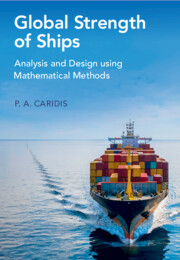Book contents
- Global Strength of Ships
- Reviews
- Global Strength of Ships
- Copyright page
- Dedication
- Contents
- Preface
- Abbreviations
- 1 Ship Structures and Structural Design Practice
- 2 The Evolution of Ship Structures from Antiquity to the Present Day
- 3 Sea Loads on Ship Structures
- 4 Primary Loading of Ship Structures
- 5 Hull Structure, Mechanical Equipment and Cargo-Related Loads
- 6 Linear Response to Primary Loading
- 7 Nonlinear Response to Primary Loading
- 8 Hull Girder Vibration
- 9 Probabilistic Modelling of Primary Loading and Hull Girder Response
- 10 Design of Hull Girder for Strength
- 11 Aspects of Uncertainty
- 12 Ship Structural Reliability Theory and Applications
- 13 Hull Girder Strength Assessment Using the Finite Element Method
- 14 Optimum Design of Ship Structures
- Book part
- Index
- References
2 - The Evolution of Ship Structures from Antiquity to the Present Day
Published online by Cambridge University Press: 20 March 2025
- Global Strength of Ships
- Reviews
- Global Strength of Ships
- Copyright page
- Dedication
- Contents
- Preface
- Abbreviations
- 1 Ship Structures and Structural Design Practice
- 2 The Evolution of Ship Structures from Antiquity to the Present Day
- 3 Sea Loads on Ship Structures
- 4 Primary Loading of Ship Structures
- 5 Hull Structure, Mechanical Equipment and Cargo-Related Loads
- 6 Linear Response to Primary Loading
- 7 Nonlinear Response to Primary Loading
- 8 Hull Girder Vibration
- 9 Probabilistic Modelling of Primary Loading and Hull Girder Response
- 10 Design of Hull Girder for Strength
- 11 Aspects of Uncertainty
- 12 Ship Structural Reliability Theory and Applications
- 13 Hull Girder Strength Assessment Using the Finite Element Method
- 14 Optimum Design of Ship Structures
- Book part
- Index
- References
Summary
In Chapter 2 the evolution of ship structures from the prehistoric period up to the present day is described. The aim of this chapter is to bring together the results of underwater archaeology with that of documents, images and models in order to underline the important stages in the evolution of waterborne craft, focusing on structural design and construction practice. The discussion concerning the prehistoric period deals mainly with Egypt and Greece. Fabrication methods used in antiquity are discussed (laced ships, mortise-and-tenon joint). A section is devoted to ship construction in Greece during the historical period (trieris and later ship types). This is followed by descriptions of ships built during the later Roman period and Byzantium covering the first ten centuries of the Christian era. Ship construction practice in Venice is discussed, followed by a discussion of ship construction in China. Evolution of ships in Western Europe included several ship types (cog, hulk, carrack, caravel and galleon). The impact of the introduction of iron and internal combustion engines is discussed. Theoretical developments in mechanics of materials and elasticity theory are discussed in relation to the practice of ship structural design during the 19th century and the first half of the 20th century. The chapter ends with a discussion of computer-based techniques and the introduction of reliability theory.
- Type
- Chapter
- Information
- Global Strength of ShipsAnalysis and Design using Mathematical Methods, pp. 46 - 88Publisher: Cambridge University PressPrint publication year: 2025

